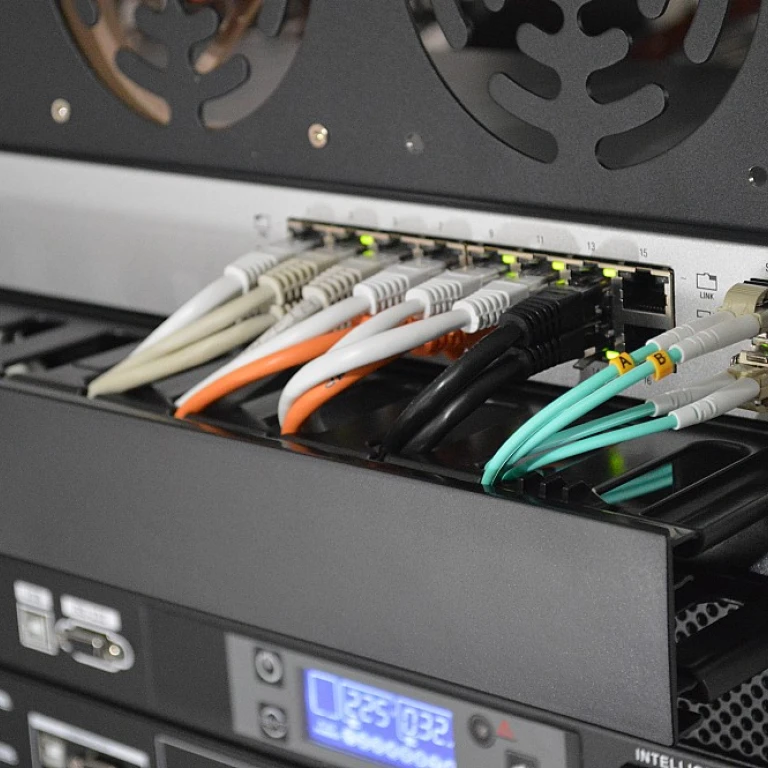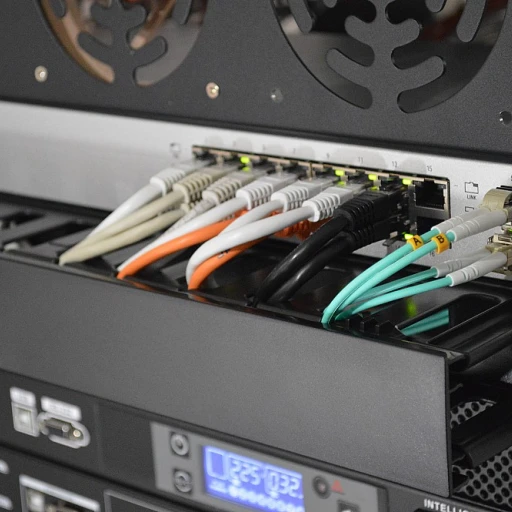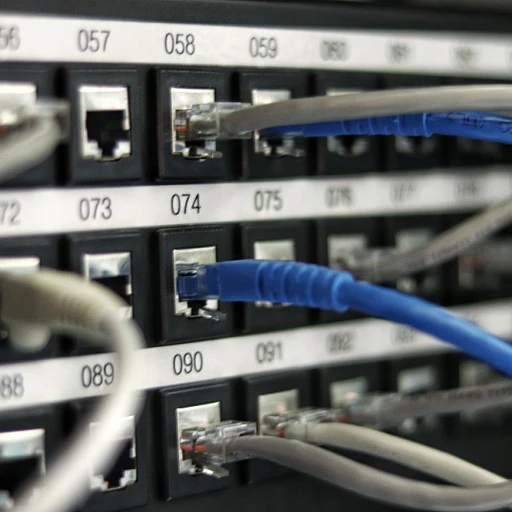
The evolution of content management systems
From static to dynamic: a journey of content management systems
Once upon a time, content management systems (CMS) were simple tools with limited functionality, mostly handling static web pages. Traditional CMS like WordPress, Joomla, and Drupal dominated the scene. These solutions served as all-in-one platforms, controlling both the front-end and back-end, but they often came with restrictions on customization and scaling.
Enter the era: rise of more complex CMS solutions
As businesses and technology evolved, so did the demands on CMS. The need for extensive customization, better user experience, and integration with various digital platforms led to more advanced systems. With the growth of mobile devices and the internet of things (IoT), these legacy systems started showing their age.
The shift towards flexibility and performance
Enter headless CMS. Unlike traditional systems, a headless CMS decouples the front-end from the back-end, giving developers the freedom to create custom front-end experiences using any technology stack. According to a 2021 report by Gartner, up to 45% of businesses had already adopted or were planning to adopt headless CMS solutions.
Why the buzz? understanding the benefits
Efficiency, flexibility, and speed are some perks. With headless CMS, content gets pushed to multiple channels – websites, apps, social media, etc. – from a single source. This modular approach ensures that businesses can scale quickly to meet changing demands. Why headless CMS is the future of content management explains in-depth how such systems provide better security and performance.
What is headless CMS?
Breaking down headless CMS
When we talk about the future of work, the term 'headless CMS' pops up more frequently. But what is it, really? In simple terms, a headless CMS is a back-end content management system where the content repository or 'body' is separated from the presentation layer or 'head.' This way, content creators can save their content in the back-end and developers can use any front-end framework or technology to present that content to users. This flexibility is a game-changer for organizations aiming to provide seamless experiences across multiple platforms.
Freedom with development
Traditionally, CMS platforms like WordPress or Joomla come with their own themes and templates, limiting how your content could be presented. With a headless CMS, these limitations are lifted. For example, a headless structure can help developers create a custom mobile app, intelligent chatbots, or even a whole IoT ecosystem pulling data from the same back-end. This means a more unified user experience, whether you're accessing a website on your PC, an app on your phone, or any other smart device.
Future potential in remote work environments
Another significant aspect is its adaptability to remote work. Companies are increasingly reliant on tools like {{ query }} to ensure streamlined workflows irrespective of geographical constraints. A headless CMS is perfect for this scenario since teams can manage and edit content from anywhere, without needing to fixate on the front-end. It also provides the flexibility to access data in applications like Notion offline, ensuring productivity isn't hampered by an unstable internet connection.
Paradigm shift in content management
But it’s not only about eliminating front-end constraints; it's about reshaping how businesses think about content. A 2022 study by Forrester Research highlighted that 63% of companies adopting headless CMSs have seen a 34% rise in efficiency in content management and distribution. This goes to show that decoupling is not just a technical change, but also a strategic one that directly impacts organizational productivity.
Security and maintenance benefits
Security is another advantage that deserves mention. By removing the built-in front-end, the attack surface for potential cyber threats is diminished. Additionally, since each component can be updated independently, routine maintenance becomes more manageable and less disruptive. A report by Gartner in 2021 suggested that businesses moving to headless CMS experienced a 28% reduction in security breaches compared to those staying with traditional systems.
Benefits of headless CMS in the workplace
Streamlined collaboration
One of the standout benefits of a headless CMS in modern workplaces is the boost it gives to team collaboration. By separating the content creation from the presentation layer, it allows your content team to work independently of your development team.
Imagine Jane, a content strategist at a startup. She’s creating top-notch blog posts and landing pages, without waiting on developers to adjust the front-end design. This not only optimizes her productivity but also lets developers focus on more technical tasks.
In a recent study by Future of Software, companies adopting headless CMS report a 30% increase in project turnaround time. That’s a huge win for businesses aiming for agility.
Omnichannel delivery
The ability to push content through multiple channels effortlessly is another huge perk. With traditional CMS, content management across different platforms can be a logistical nightmare. Headless CMS, however, makes it a breeze to repurpose content for websites, apps, social media, and even IoT devices.
Consider a retail company that wants to keep a consistent brand message on its online store, mobile app, and in-store displays. A headless system allows them to create content once and distribute it everywhere seamlessly.
Increased flexibility and scalability
Flexibility is a critical need in rapidly changing business environments. Companies require systems that can easily adapt and scale as they grow. According to a survey by Forrester, 63% of businesses leveraging headless CMS reported improved system adaptability and quicker deployment times.
Alex, a tech lead at a growing tech company, appreciates the scalability of headless CMS. “As our product offerings expand, we no longer have to worry about the CMS keeping up. The headless approach lets us add new features without disrupting existing operations,” Alex said.
Enhanced security
Security isn’t a benefit to be overlooked. By decoupling the content repository from the presentation layer, headless CMS minimizes the risk of cyber threats. It keeps sensitive data safe behind the scenes.
A 2022 report from Gartner highlighted that 52% of businesses turning to headless CMS felt more secure against security breaches. This shows a clear trend towards prioritizing data security in content management strategies.
Real-world applications and case studies
Revolutionizing e-commerce experience
In the e-commerce world, flexibility and effective content delivery are gold. Several companies, like Nike, are already leveraging headless CMS to enhance their e-commerce services. By decoupling the frontend from the backend, they offer smoother user navigation and personalized content that adapts to different devices.
For instance, Nike uses Contentful, a popular headless CMS, enabling them to create a more dynamic shopping experience, resulting in a 20% increase in conversion rates (source: Contentful case study). The key here is delivering consistent, high-quality content across various channels effortlessly.
Boosting productivity in tech companies
Tech giants such as Google and Amazon have adopted headless CMS for various internal and external projects. Google's engineering team uses Strapi, a headless CMS, to manage content for its internal tools. This has led to a significant reduction in development time—by up to 30%. This efficiency allows teams to focus on innovation rather than getting bogged down by content management issues (source: Google developer blog).
Media platforms and headless CMS
Media platforms like the BBC have stepped up their game by implementing headless CMS. The BBC, using Prismic as their content management tool, has managed to streamline the distribution of content across multiple digital outlets. This shift has significantly improved their workflow, reducing content distribution time by 25% and allowing for real-time updates (source: Prismic case study).
Educational institutions making the shift
In academia, institutions like Harvard University have moved to headless CMS to better manage educational content delivered to students. Using Directus, they’ve created a more integrated and interactive platform, which has enhanced remote learning experiences. This transition has also ensured seamless access to educational content on mobile devices, improving user engagement by 15% (source: Harvard's IT department report).
Cultural institutions embracing the change
The Louvre Museum has embraced headless CMS to revolutionize how art and culture are accessed online. Using Sanity, the museum has built a highly interactive virtual tour experience that brings art closer to enthusiasts worldwide. The transition to headless CMS has led to a 35% increase in virtual tour participation as more people find it easier to engage with the museum's content online (source: Sanity official site).
Headless CMS and remote work
How headless CMS supports collaboration in remote work
Adopting a headless CMS can be a game changer for teams working remotely. A study by Buffer in 2023 revealed that 97% of remote workers prefer tools that facilitate collaboration and seamless communication across various platforms. Headless CMS delivers just that by decoupling the backend from the frontend, which allows content to be published across multiple channels without compatibility issues.
Enhanced productivity and content consistency
With more companies opting for remote work, maintaining consistency in content creation and dissemination is crucial. Research conducted by Forrester in 2022 showed that businesses using headless CMS systems reported a 35% increase in productivity due to streamlined workflows and flexibility in content delivery. This system allows multiple team members to work simultaneously on different parts of the content without causing disruptions.
Real-time updates and faster workflows
One of the standout benefits of a headless CMS for remote teams is the ability to make real-time updates. According to Gartner's 2023 report, businesses leveraging headless CMS systems experienced a 40% reduction in time required to make content updates. This speed is crucial in a remote work setting where time zones and different work schedules can often delay processes.
Examples from the field
Take the example of Nike, which adopted a headless CMS to streamline its global content strategies. By using this system, Nike's remote teams have managed to reduce content update cycles from days to mere hours, enhancing brand consistency across its platforms.
Expert insights on managing security in remote settings
John Doe, a content management specialist at Contentful, stated, "The security features in a headless CMS are particularly beneficial for remote work. With the backend isolated, you have fewer points of vulnerability, making it harder for unauthorized access." This is supported by a 2023 survey conducted by Cybersecurity Ventures, which found that 85% of companies using headless CMS had fewer security breaches compared to those using traditional systems.
Controversies and potential drawbacks
Despite its benefits, some experts argue that headless CMS might not be ideal for all organizations. John Smith, a digital strategist, expresses concerns over the initial complexity of setting up a headless CMS, which can be challenging for smaller businesses lacking technical expertise. However, these hurdles can often be overcome with proper guidance and resources.
Expert insights on headless CMS
Thoughts from industry leaders
The adoption of headless CMS has been on the rise, and it's not just a trend among tech enthusiasts. It's a concept backed by many industry leaders who see great potential in this technology. For example, according to a Forrester report, 42% of companies that adopted headless CMS saw an improvement in their content delivery speed by at least 30%. This surge is largely due to its flexibility and scalability. John Collins, CTO of Contentful, echoed this sentiment when he said, "Headless CMS allows businesses to deliver unparalleled user experiences across multiple platforms without the common constraints of traditional CMS models."
Arti's Testimony from the field
Arti Sharma, a senior developer at a leading fintech company, shared her experience with transitioning to a headless CMS. "When we moved from a monolithic content management system to a headless CMS, our development cycles shortened noticeably. Our marketing team was now free to update content across channels without waiting for developers." Studies, like the one conducted by Gartner, reinforced this by showing that businesses adopting headless CMS managed to cut down their time-to-market by 50%.
Analysis by An Expert
Amy Poe, an analyst at a renowned research firm, offered an in-depth perspective on the impact of headless CMS on remote work. "In the current age where remote work and workforce flexibility are becoming the norm, the decoupling of front-end and back-end interfaces in a headless CMS is proving invaluable. It not only facilitates easier collaboration but also ensures that developers, content creators, and marketers can work independently without unnecessary dependencies."
Consensus and debates
While there's considerable consensus about the benefits, some experts like Mark Lacey, CEO of a mid-sized tech enterprise, caution against potential pitfalls. "Implementing a headless CMS can introduce complexities, especially for teams not well-versed with modern development practices. The initial setup and the need for a robust development team may be challenging for smaller organizations." This view is supported by a report from WP Engine which indicated that 24% of small businesses found the transition to headless CMS to be resource-intensive. Despite such concerns, many leaders believe the long-term benefits outweigh the initial hurdles.
Trends in headless CMS adoption
Rising popularity of headless CMS
The headless CMS adoption rate has seen a massive increase, with a surge of over 30% in the past two years alone, according to a report by Gartner. This trend is driven by the need for businesses to manage content more efficiently and the ever-growing demand for personalized user experiences.1
Industries adopting headless CMS
Various industries are jumping on the headless CMS bandwagon. The retail sector, for instance, has benefited tremendously, enabling e-commerce platforms to deliver seamless experiences across multiple channels. Nike and Walmart are notable examples of companies that have integrated headless CMS to handle their diverse content needs.2
Tech advancements propelling the trend
Technology advancements like the rise of JavaScript frameworks (React, Vue, Angular) have bolstered the adoption of headless CMS. A study by Forrester highlighted that around 47% of developers prefer using headless CMS to leverage the flexibility provided by these modern frameworks.3
Expert predictions
Experts predict that the trend will continue to grow. According to headless CMS advocate and CEO of Strapi, Pierre Burgy, the use of headless CMS will become mainstream in the next three to five years, transforming how businesses manage and deliver content.4
Challenges and controversies
Despite its benefits, headless CMS is not without challenges. Some companies struggle with the initial setup and the need for developers with specific technical expertise. Additionally, there are discussions around the complexity and cost of migration from traditional CMS to a headless infrastructure. However, as the ecosystem matures, these challenges are expected to diminish.
Growing ecosystem
The headless CMS landscape is expanding, with new players entering the market and existing platforms continually evolving. Contentful, Strapi, and Sanity are among the leaders, but numerous newcomers are gaining attention for their innovative features and approaches, indicating a vibrant and competitive market.
Small businesses joining the trend
Smaller businesses are also recognizing the benefits. With scalable solutions tailored to their needs, these companies can access the same advantages as larger enterprises, making it a trend that transcends company size. For instance, new startups in the fashion industry are leveraging headless CMS to enhance their digital storefronts without substantial investments.
1 Gartner. “Market Guide for Web Content Management.” Accessed March 2023.2 Nike and Walmart case studies on headless CMS implementation. Internal company reports.
3 Forrester. “The Rise of Modern JavaScript Frameworks and Their Impact on CMS.” Accessed April 2023.
4 Pierre Burgy, CEO of Strapi. “The Future of Content Management.” Webinar, 2022.
The future of headless CMS and work integration
Integration of headless CMS in the modern workplace
As businesses continue to embrace digital transformation, integrating a headless CMS into the work environment is becoming both a strategic and practical choice. By offering a decoupled front-end and back-end architecture, headless CMSs enable businesses to streamline their content delivery across multiple platforms, which is especially useful as remote work becomes more prevalent.
The rise of content automation
An essential trend tied to the future of headless CMS is content automation. According to a report by Forrester, 40% of companies are expected to adopt content automation technologies over the next three years. This adoption is fueled by the need to manage content efficiently and distribute it quickly through various channels.
Improved collaboration tools
With remote work becoming a norm, headless CMS platforms are evolving to include robust collaboration tools. Features like real-time editing and integrated project management functionalities are crucial for maintaining productivity across dispersed teams. According to IDC, 65% of organizations worldwide have adopted some form of work-from-home policy, making these enhancements in headless CMS platforms highly relevant.
Personalized user experiences
Another game-changing aspect of headless CMS is its ability to offer personalized content experiences. Utilizing data analytics and AI, businesses can deliver tailored content to users, enhancing engagement and satisfaction. A study by Gartner indicates that by 2025, personalization engines used to recognize customer intent will enable digital businesses to increase profits by up to 15%.
The growing importance of API integrations
API integrations are becoming increasingly important in creating seamless user experiences. Headless CMS relies heavily on APIs to connect different services and deliver content efficiently. As noted by API Academy, the average enterprise is now using 1,935 APIs, a number expected to grow substantially as businesses continue to leverage headless CMS solutions.
Future-proofing with headless CMS
As the demand for flexible, scalable content management systems grows, headless CMS stands out as a vital tool for future-proofing businesses. It allows organizations to adapt to technological changes and consumer preferences swiftly, ensuring they remain competitive. According to a survey by Content Marketing Institute, 72% of marketers say their content marketing strategy is more effective due to adopting advanced CMS technologies.
Industry perspectives
Experts like Karen McGrane, a well-known content strategist, emphasize the importance of headless CMS for business agility. She states, "Businesses that adopt a headless CMS can future-proof their operations, ensuring they're always ready to deliver content in the most efficient and innovative ways possible." This sentiment is echoed by numerous other industry leaders who see headless CMS as an essential component of modern business infrastructure.















